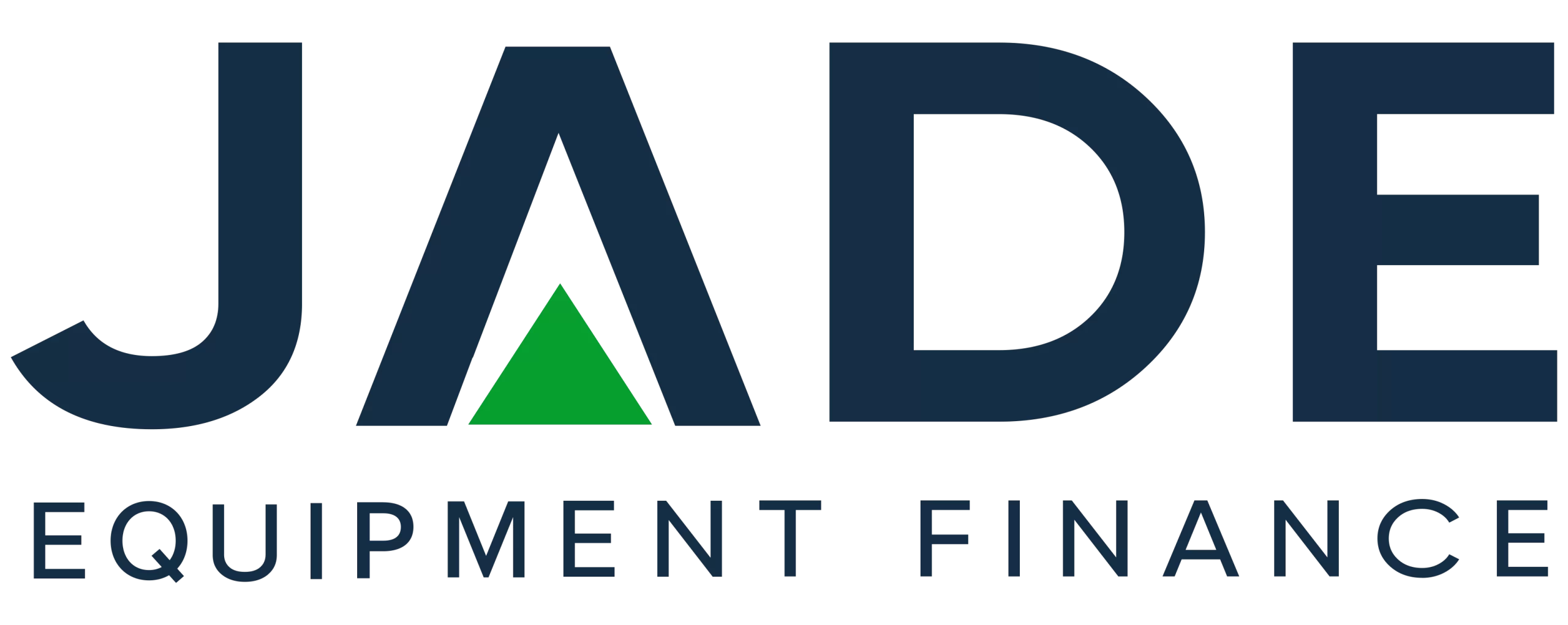2020 will be marked and long-remembered for a lot of reasons. Most of them, are unprecedented! But one thing which has emerged through the events surrounding the global pandemic especially, has been a greater interest in statistics and figures and how these impact our private lives and businesses. Following that curve, the daily reporting of COVID-19 cases and sadly deaths in both Australia and around the world became a must-do. Hanging on every word of every press conference for a dollar amount in regard to support packages was critical.
The number of unemployed on JobKeeper have suddenly increased significantly. The number of weeks, or months in the case of Melbournians, that we would be in lockdown or have our business closed or limited was essential information. We all discovered exactly how far 1.5 metres was and we all knew the square metre space of our business so we could calculate how many people could be allowed in at any one time.
For us at Jade Equipment Finance (we’re always focused on those interest rates and other global economic indicators) it was even more about the RBA’s decisions on rates each month.
Stats and figures have achieved a new importance and rightly so. There are a lot of stats that many businesses can use to their advantage when they appreciate that they are more than just content for politician press conferences and news reporters.
We’re covering off on some of the commonly referred to economic statistics and what they may mean for your equipment investment decisions.
GDP: Gross Domestic Product
You will have heard the PM and Treasurer in particular, regularly referring to GDP which is Gross Domestic Product. Even more specifically, they refer to the growth in GDP. A simple definition of GDP is the value of goods and services which a country produces in a certain time period. The growth or fall in GDP is usually represented as a percentage and is the key stat to keep in mind. This is considered the indicator of a country’s economic performance.
Australia’s GDP figures and growth are reported quarterly and sometimes monthly. There are raw figures and seasonally adjusted, but that’s getting too technical.
Key here is that technically, when a country records two consecutive quarters of negative growth or negative GDP, it is considered as being in recession. This is what happened in Australia this year, and in many other countries, as a result of the economic effects of coronavirus. In good news, Australia followed up that result with positive GDP figures which technically put us out of recession.
To put it in perspective, the latest figures (as of time of writing) from the ABS report GDP growth in the last quarter of 3.3% but through the year the GDP fell by 3.8%. So any growth following the recessive quarters is coming off a lower base.
What it means to your business? Increases in GDP general indicate positive economic performance and that may be good signs for your business.
Consumer Confidence Figures
Consumer confidence is a key figure to listen out for as this represents, as it implies, the confidence that consumers have in the economy. Essentially their willingness to get out and spend their money. Whether you’re operating in a B2B or B2C market, an increase in consumer confidence can mean a boost for business and catalyst for new business equipment financing.
The Market
Economic reporters refer to ‘the market’ in the financial updates and reports in the media. The market they’re referring to is the share market. You’ll hear them saying the market was up or down so many percentage points. This can also be an indicator of economic confidence and growth in key sectors as it reveals what companies and industry have the confidence or lack of confidence by investors.
Interest Rates
Now to our favourite figures to watch – interest rates! We’ve covered interest rates in a few explainer articles, but as a catch-up, the Reserve Bank of Australia (RBA) set the official cash rate which is the interest rate that banks essentially pay to source funds or some of their funds. The official cash rate then flows on to determine the interest rate that is charged by banks and lenders on borrowings on all types of loans and on earnings for savings accounts.
The Board of RBA meet on the first Tuesday of each month and around midday or early afternoon on that day there will be a flurry of news reports as to their decision. The announcement of the RBA holding, cutting or increasing rates is highly anticipated.
The figure they announce as the official cash rate is NOT the rate that Jade Equipment Finance or any other lender can achieve on equipment finance interest rates and deals or any other type of borrowing. But a cut in the official rate can flow on into our sector, enabling our Jade consultants to secure even cheaper rates.
Through 2020 the RBA has cut interest rates and they are at historic low levels. For your equipment investments that means you can lock in an equipment finance deal through Jade at a very low interest rate which will be fixed over the full term of your loan. So even if the official rate increases in 1, 2 or 3 years from now, your equipment finance with a fixed term of say 4,5,6 or more years from now, will remain at the same fixed repayment level based on today’s interest rate.
So that’s a few reasons why understanding stats and figures can be significant. Sometimes they may appear like issues way beyond your business interest. But really, it’s a matter of knowing how to crop that big economic picture into your small business frame.
To stay across all relevant statistics, www.abs.gov.au
For an equipment finance quote at cheap interest rates, contact Jade Equipment Finance on 1300 000 003
DISCLAIMER: YOU ARE ADVISED THAT THE INFORMATION PRESENTED HERE IN THIS BLOG, IS FOR GENERAL INFORMATION AND NOT INTENDED TO REPRESENT FINANCIAL ADVICE IN ANY WAY. IF YOU CONSIDER THAT YOU DO REQUIRE ADVICE IN REGARD TO YOUR FINANCIAL SITUATION, THEN WE RECOMMEND THAT YOU SEEK A CONSULTATION WITH A PROFESSIONAL FINANCIAL ADVISOR. NO LIABILITY IS ACCEPTED IN REGARD TO THE DETAILS OR ANY ERRORS IN THE CONTENT WHICH MAY IN PART HAVE BEEN SOURCED FROM A RANGE OF SOURCES.


